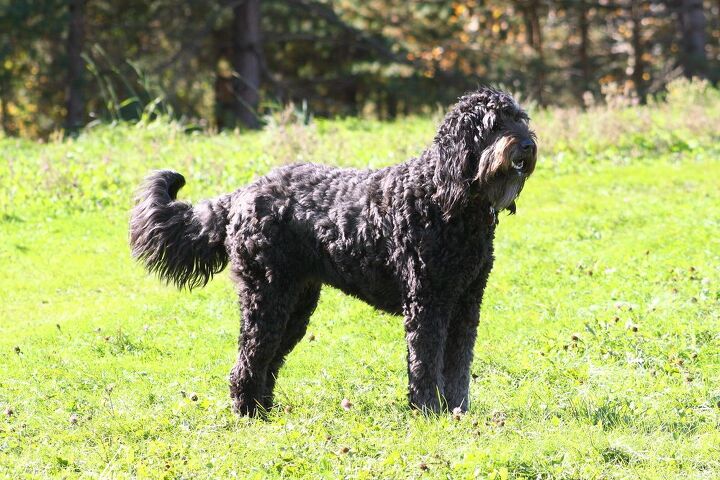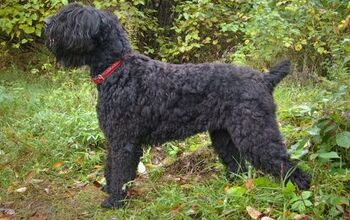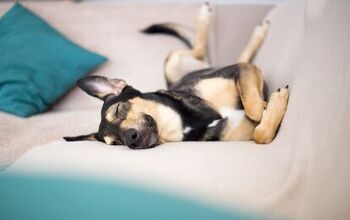Russian Doodle Terrier


About Russian Doodle Terrier
The majestic looking Russian Doodle Terrier brings the smarts of the Standard Poodle together with loyal, protective nature of the Black Russian Terrier for a wonderful family dog who loves playing with the kids, taking in walks or runs with his owner and generally just hanging out with his people.
The Russian Doodle Terrier is the offspring of the intelligent Standard Poodle and the protective Black Russian Terrier.
As a designer dog, the Russian Doodle Terrier most likely dates back to the 1980s when breeders first begin mixing pure-bred dogs to produce puppies that carried the desired traits of both parent breeds – typically a healthier, smaller, hypo-allergenic or gentler form of a popular breed.
The Russian Doodle Terrier’s mixed breed status means he doesn’t qualify to be a member of the American Kennel Club (AKC) however his parent breeds are both members in good standing. The Poodle joined AKCs “sporting” group in 1887 while the Black Russian Terrier was named to AKC’s “working” group in 2004.
The Russian Doodle Terrier is a large-sized dog who is fairly active and the food you choose should reflect this. Opt for a top quality, nutrient-rich kibble that meets his age, size and activity levels and is high in protein / low in fillers such as carbs. As he comes from two breeds that can experience joint issues later in life you need to keep him fit and trim so plan to feed 2 to 3 meals daily (versus free feeding) and because Poodles can be prone to digestive issues, choose a food that is lower in fat.
The Russian Doodle Terrier is a loving family dog with a highly protective nature.
While the super smart Russian Doodle Terrier is quick to pick up and obey commands the easily distracted Terrier side can make him a handful when it comes to training. This boy’s working background means he needs a firm, consistent approach to training that lets him know exactly what is expected of him. Because he has a strong protective instinct, early socialization is important to ensure this dog plays nice with others. As with most dogs, rewards-based training with lots of praise and treats of your choice will get the results you are looking for.
Your Russian Doodle Terrier will be a big dog and weigh in the range of 65 to 110 pounds once he reaches adulthood.
Your Russian Doodle Terrier is a loyal, loving family dog who does well with kids and other pets alike. He is highly intelligent and with this comes a stubborn streak that can make him a challenge to train, but worth the effort. His strong protective instinct means he has great watch- or guard-dog potential however will need early socialization to ensure he can get along well with new faces and animals. This handsome boy does best when he has a job to do or is kept busy because boredom can lead to destructive behaviors.
While designer dogs typically side-step the health issues that can plague their pure-bred parents, it’s important to know what your dog could potentially inherit. With the Russian Doodle Terrier, that can include joint issues from both parent breeds, bloat and digestive issues from the Poodle and progressive retinal atrophy from the Black Russian Terrier side.
The average life span of a Russian Doodle Terrier is 10 to 12 years.
The Russian Doodle Terrier comes from a strong, working dog background and needs regular daily exercise of long walks and active playtime. Once socialized, visits to an off-leash dog park would be a great addition to his workout routine. A lack of exercise with this dog can result in boredom and destructive behaviors.
The Russian Doodle Terrier does best when he has a job to do or is kept busy.
Although the Russian Doodle Terrier doesn’t make the American Kennel Club (AKC) list of purebreds, he is a member of the Designer Breed Registry (DBR) and the International Designer Canine Registry (IDCR).
The Russian Doodle Terrier’s thick curly coat is considered non- to low-shedding which makes him a great fit for owners with allergies. The Poodle side of this dog may require periodic visits to the groomer to keep his coat looking it’s best, but this dog is relatively maintenance free and brushing 1 to 2 times a week should be sufficient to keep hair in check. Because he is a floppy eared dog, weekly ear cleaning to remove dirt and debris should be done to prevent infection.
Russian Doodle Terrier pups will grow into big dogs that can have an over-protective nature when it comes to their family. Early socialization is crucial for this dog and should begin when he is a puppy. As both parent breeds can be prone to joint issues, take it easy when exercising and leash training this pup. Over-stressing tiny limbs can result in joint problems later in life.

Sharing space with three seriously judgy Schnoodles and a feline who prefers to be left alone. #LivingMyBestLife
More by Mary Simpson

























